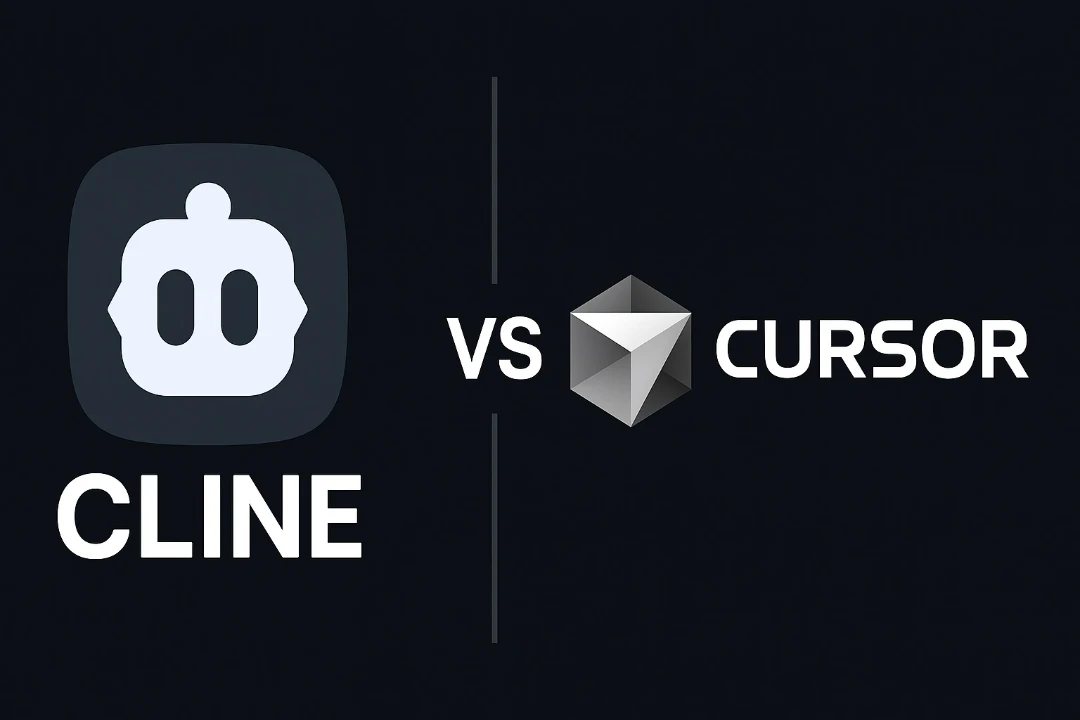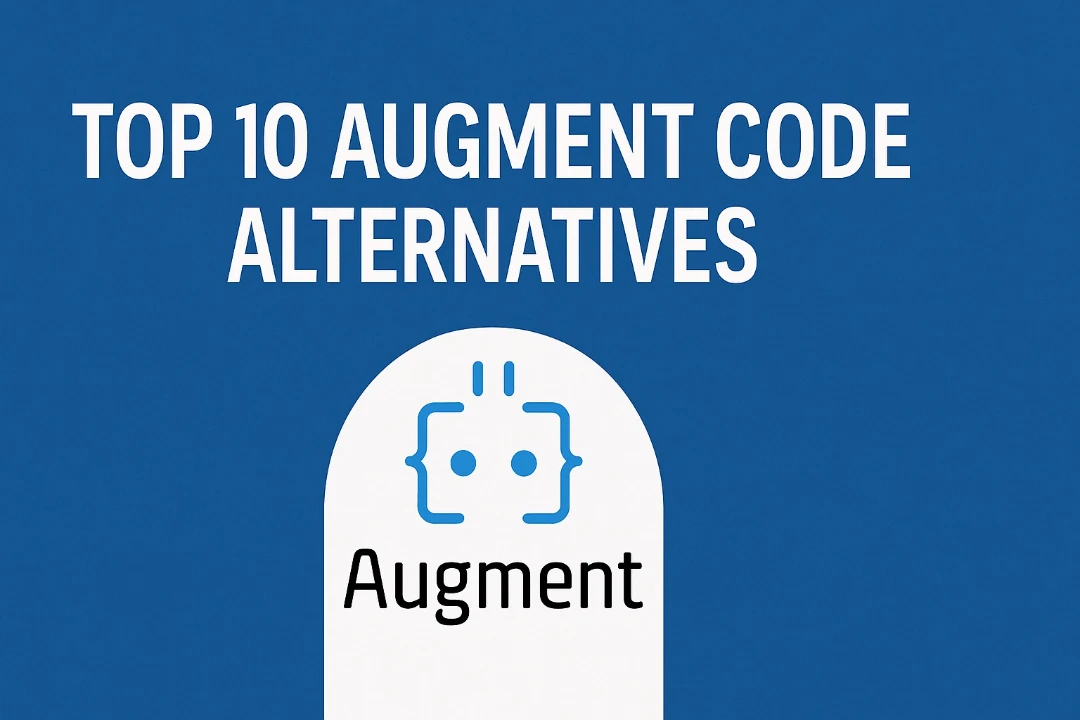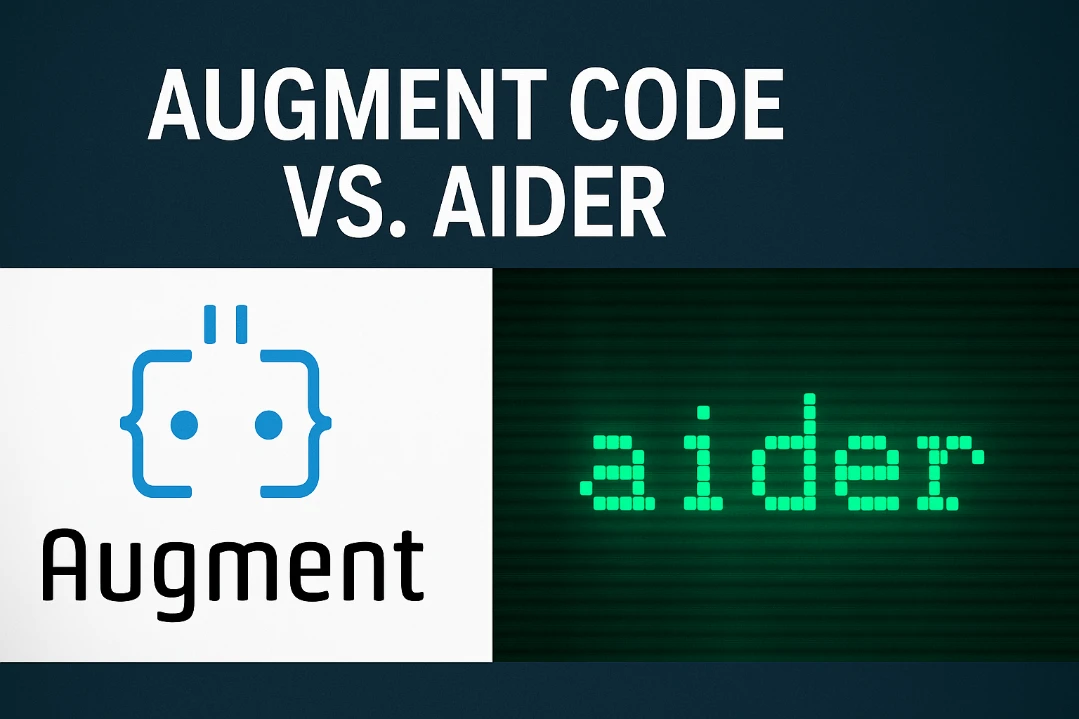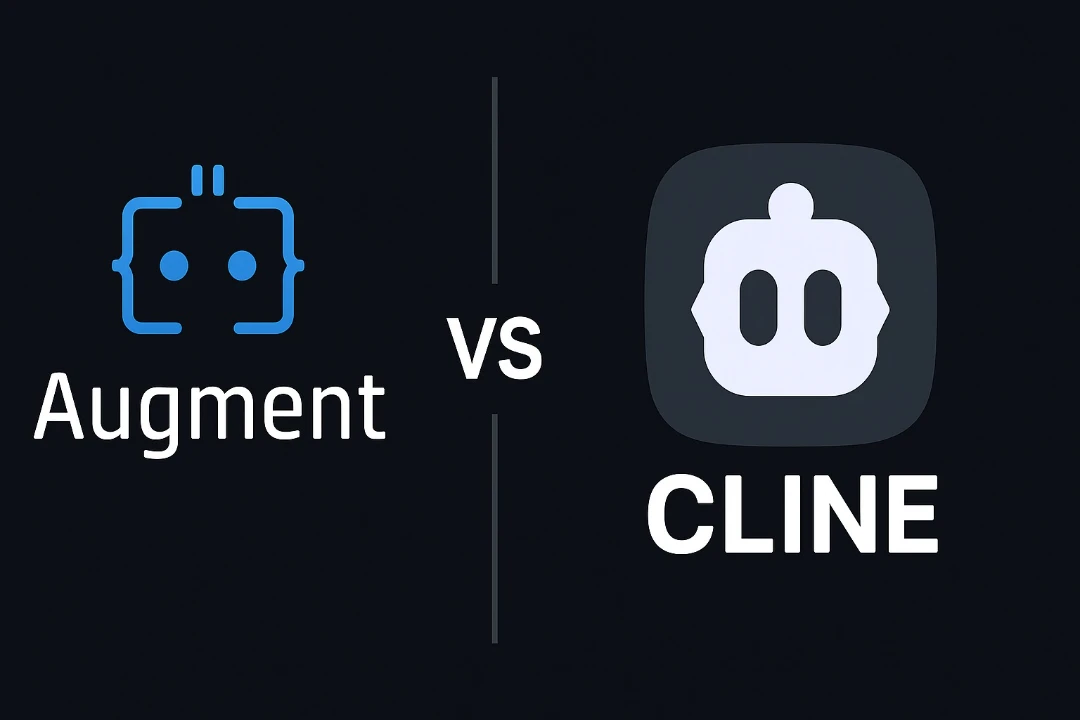
Cline vs Cursor: The Ultimate Vibe Coding Tools Comparison in 2025
Cline vs Cursor: The Ultimate Vibe Coding Tools Comparison in 2025
In today's AI-accelerated development landscape, "vibe coding" has emerged as a revolutionary approach that transforms how developers interact with code. Rather than meticulously crafting each line, developers increasingly rely on AI assistants to handle the implementation details while they focus on high-level design and problem-solving. Two powerful contenders in this space are Cline and Cursor, each offering unique approaches to AI-assisted development that can dramatically boost productivity and creativity.
This comprehensive guide will explore the key differences between these two leading vibe coding tools, helping you determine which might better align with your development style, workflow preferences, and technical requirements.
Understanding Vibe Coding
Before diving into the specific tools, it's worth understanding what "vibe coding" actually means. Coined by AI expert Andrej Karpathy, vibe coding refers to a programming style where developers rely heavily on AI to generate, refine, and debug code. Instead of writing every line manually, programmers provide high-level instructions and allow AI to handle the implementation details.
As Karpathy famously described it: "It's not really coding – I just see stuff, say stuff, run stuff, and copy-paste stuff, and it mostly works." This approach represents a fundamental shift in development, where the programmer's role evolves from manual coding to creative direction and oversight.
The Origin and Philosophy of Cline and Cursor
Cline: The Collaborative AI Partner
Cline emerged as an autonomous coding agent designed to integrate directly into Visual Studio Code. Built with Anthropic's Claude models at its core, Cline quickly gained popularity for its thoughtful, collaborative approach to AI assistance.
Token-based AI coding assistant with advanced model flexibility and deep VSCode integration
Cline's philosophy centers around being a true collaborator rather than just a code generator:
- It explains its reasoning and approach before taking action
- Creates a thoughtful plan for implementation
- Maintains a human-in-the-loop approach for safety and control
- Operates as an extension in your existing development environment
With over 1.2 million installations and 39,000+ GitHub stars, Cline has established itself as a leading AI coding assistant that emphasizes partnership over automation.
Cursor: The AI-First Editor
Cursor takes a fundamentally different approach as a standalone editor built on VS Code's foundation but reimagined from the ground up with AI at its core. Developed by Anysphere, Cursor represents an all-in-one solution where AI assistance is intrinsic to the editing experience.
AI-powered code editor that combines powerful coding assistance with advanced AI capabilities
Cursor's philosophy embraces the "vibe coding" paradigm more completely:
- The editor and AI are inseparable parts of a unified experience
- AI features are native, not added as extensions
- The interface is designed specifically for AI-human collaboration
- It aims to be a complete replacement for traditional editors
This approach has attracted significant attention, with Cursor securing substantial venture backing and a rapidly growing user base of developers eager to embrace the vibe coding revolution.
Core Feature Comparison
When evaluating AI coding tools, understanding their core capabilities is essential. Here's how Cline and Cursor compare across key functionality areas:
Code Generation and Editing
Cline:
- Thoughtful code generation with explanations and planning
- File creation and editing through natural language instructions
- Diff-view for reviewing changes before application
- Monitors linter/compiler errors to fix issues automatically
- Human approval required for all changes (safety-focused)
Cursor:
- Deeply integrated code generation within the editor environment
- Full editor control by the AI for comprehensive changes
- AI auto-complete that can generate entire functions
- Composer feature for multi-file code generation
- Code explanation and documentation generation
Key Difference: While Cline takes a more cautious, explanatory approach with human approval at each step, Cursor offers a more seamless integration where the boundary between editor and AI assistant is deliberately blurred. Cursor's approach may feel more "vibey" with faster iterations, while Cline emphasizes understanding and control.
Terminal Command Execution
Cline:
- Executes commands in your VS Code terminal with permission
- Real-time output processing and response
- "Proceed While Running" option for background processes
- Human approval required for all commands (safety-focused)
- Maintains tight integration with VS Code's terminal
Cursor:
- Similar terminal execution capabilities
- AI-suggested commands based on context
- Integrated terminal within the Cursor environment
- Command sequences for complex operations
- More autonomous command execution
Key Difference: Both tools offer robust terminal interaction, but Cline's implementation emphasizes safety with explicit approval for each command, while Cursor creates a more streamlined experience that may feel more efficient but provides less oversight.
Browser Integration and Testing
Cline:
- Can launch browsers, interact with elements, and capture screenshots
- Monitors console logs for debugging
- Provides step-by-step testing capabilities
- Each browser action requires approval for security
- Methodical, controlled approach to web testing
Cursor:
- Similar browser interaction capabilities
- More seamless integration with the development workflow
- Can automate sequences of browser actions
- Visual feedback integrated into the editor
- Designed for rapid iteration cycles
Key Difference: Cline offers a more deliberate, safety-focused approach to browser automation, while Cursor aims for a more streamlined experience that may accelerate testing workflows but with potentially less granular control.
AI Models and Integration
Cline:
- Primarily optimized for Claude models (especially Claude 3.5 Sonnet)
- Supports multiple providers including OpenRouter, Anthropic, OpenAI
- Compatible with local models through LM Studio/Ollama
- Tracks token usage and API costs
- Open-source with transparent operation
Cursor:
- Supports multiple AI models including GPT-4o, Claude 3.5/3.7 Sonnet
- Proprietary integration optimized for specific models
- Custom model configuration options
- Usage-based pricing with model-specific request limits
- Closed-source with custom optimizations
Key Difference: Cline offers more flexibility in model selection and transparency in operation, while Cursor provides a more curated experience with potentially better optimization for specific models within its environment.
Approach to Context and Codebase Understanding
Cline:
- MCP (Model Context Protocol) for extending capabilities
- Growing marketplace of MCP tools
- Focuses on understanding code context through careful analysis
- Methodical approach to codebase exploration
- Strong semantic understanding of complex projects
Cursor:
- Native codebase understanding built into the editor
- Codebase chat for direct questions about the project
- Fast semantic code search
- Repository-level rules and understanding
- Optimized for rapid navigation and comprehension
Key Difference: Cursor's native integration gives it an edge in seamless codebase interaction, while Cline's extendable MCP system offers greater potential for customization and specialized tools.
User Experience Comparison
The user experience significantly impacts productivity and satisfaction with AI coding tools. Here's how Cline and Cursor compare:
Interface Design and Workflow
Cline:
- Operates within the familiar VS Code interface
- Chat panel for interaction with the AI assistant
- Clear approval mechanisms for file changes and commands
- Visual checkpoints system for comparing workspaces
- Maintains traditional development workflow with AI enhancement
Cline's interface philosophy respects the existing development experience, adding AI capabilities without fundamentally changing how you interact with your editor. This approach minimizes disruption for teams transitioning to AI-assisted development.
Cursor:
- Complete redesigned editor experience built around AI
- Integrated chat with context-awareness
- Streamlined approval workflow for faster iterations
- Modern, clean aesthetic focused on the AI-human partnership
- Reimagined workflow that centers AI collaboration
Cursor offers a more transformative experience that fully embraces the vibe coding paradigm. Its interface is designed specifically for AI-powered workflows, resulting in a visually cohesive but distinctly different development experience.
Learning Curve and Adoption
Cline:
- Gentle learning curve for VS Code users
- Familiar environment reduces transition friction
- Progressive discovery of AI capabilities
- Maintains compatibility with existing workflows
- Easier team-wide adoption due to familiar environment
Cursor:
- Steeper initial curve requiring adaptation to a new editor
- More significant workflow changes to leverage fully
- Potentially higher productivity ceiling once mastered
- Requires commitment to a new development paradigm
- May face resistance in team adoption due to environment change
The learning experience differs significantly based on your starting point and willingness to change. Developers already comfortable with VS Code will find Cline's learning curve gentler, while those ready to fully embrace vibe coding may find Cursor's complete reimagining more aligned with their goals.
Collaborative Development
Cline:
- Works within existing VS Code collaborative features
- Integrates with standard version control workflows
- Transparent changes that are easy to review
- Maintains familiar collaboration patterns
- Human-in-the-loop approach ensures team oversight
Cursor:
- Custom collaboration features built for AI-assisted workflows
- AI can help explain changes to team members
- Potentially faster iterations in collaborative environments
- May require adjusting team processes for optimal results
- Different paradigm can introduce friction in mixed teams
Cline's approach may better suit teams with established collaboration practices, while Cursor offers potentially higher velocity for teams willing to adapt their processes to its paradigm.
Performance and Resource Considerations
Speed and Responsiveness
Cline:
- Performance varies by selected AI model
- Typically fast response times for most operations
- May require more back-and-forth for complex tasks
- Operating as an extension can sometimes impact responsiveness
- Optimized for Claude models
Cursor:
- Built from the ground up for performance with AI operations
- Native integration provides smoother experience
- Generally responsive and snappy interface
- Consistent performance across the application
- Optimized for its specific supported models
In real-world usage, Cursor's purpose-built design gives it a slight edge in overall responsiveness and performance consistency, particularly for complex operations. Cline performs admirably for most tasks but occasionally shows its nature as an extension rather than a native implementation.
Token Usage and Cost Efficiency
Cline:
- Transparent token usage tracking
- Efficient prompt engineering to minimize token consumption
- Compatible with lower-cost models and local options
- Open-source approach allows community optimizations
- Generally lower token usage for equivalent tasks
Cursor:
- Usage-based pricing model with caps for different tiers
- Potentially higher costs for heavy users
- Optimized prompts for specific supported models
- Less transparency in token usage
- Premium experience with corresponding cost structure
Cline typically offers better cost efficiency, especially for frequent users, while Cursor's premium experience may come with higher costs but potentially faster results for complex tasks.
Real-World Use Cases and User Feedback
Enterprise Development Scenarios
Cline Strengths:
- Security-focused approach with human oversight
- Open-source nature for compliance and audit requirements
- Integration with existing enterprise tools and workflows
- MCP extensibility for specialized enterprise needs
- Predictable resource usage and costs
A engineering manager at a financial services company notes: "Cline's human-in-the-loop approach was crucial for our compliance requirements. The team could leverage AI assistance while maintaining the necessary oversight for our regulated environment."
Cursor Strengths:
- Potentially faster development cycles
- Comprehensive system for large-scale projects
- Superior codebase navigation for complex enterprise applications
- Unified environment for consistency
- Powerful multi-file operations
A technical lead at a tech startup shares: "Once our team fully adapted to Cursor, we saw a dramatic acceleration in feature development. The ability to describe complex changes conversationally and have them implemented across multiple files has been transformative."
Individual Developer Experience
Cline User Experience:
- Less disruptive to existing workflow
- Clear explanation of AI reasoning and decision-making
- Gradual transition to AI-assisted development
- Works alongside other favorite VS Code extensions
- Fine-grained control over AI actions
From a Reddit discussion: "I appreciate how Cline explains its thought process before making changes. It feels like working with a helpful senior dev who walks you through their reasoning rather than just dropping code in your lap."
Cursor User Experience:
- More immersive vibe coding experience
- Potentially faster for certain workflows once mastered
- Unified, purpose-built environment
- Designed specifically for AI-first development
- More transformative approach to coding
From Twitter: "After a week of full-time Cursor use, I'm coding faster than ever before. The integration between the editor and AI is so seamless that it feels like a true extension of my thinking rather than a separate tool."
Learning and Educational Context
Cline Benefits:
- Educational approach with explanations
- Step-by-step reasoning helps developers learn
- Less risk of developers becoming over-reliant on AI
- Transparent operation promotes understanding
- Maintains core coding skills while adding AI assistance
An instructor at a coding bootcamp comments: "We've introduced Cline in our advanced courses because it explains its process, helping students understand the changes rather than just accepting them. It enhances learning rather than replacing it."
Cursor Benefits:
- Rapid prototyping for learning projects
- Immersive experience for AI-native developers
- Reduces friction for those embracing vibe coding fully
- Modern interface appealing to new developers
- Complete environment reduces setup complexity
A self-taught developer shares: "Cursor helped me build complete applications while I was still learning the fundamentals. Being able to describe what I wanted and see it implemented was like having a senior developer guiding me through each project."
Making the Right Choice
When to Choose Cline
Cline is likely the better choice if:
- You prefer to remain in your existing VS Code environment
- Your team values understanding AI decisions and maintaining control
- Security and oversight are critical considerations
- You want to integrate AI into an established workflow gradually
- Open-source tools align with your development philosophy
- You need extensive customization via MCP extensions
- Cost efficiency is a priority for your AI usage
- You value transparent operation and explainability
When to Choose Cursor
Cursor might be the preferred option when:
- You're ready to fully embrace the vibe coding paradigm
- You want an immersive, purpose-built AI coding environment
- Rapid iteration and maximum speed are top priorities
- You prefer a unified, aesthetically pleasing interface
- You're starting fresh or willing to change your development habits
- Your workflow benefits from seamless codebase understanding
- You value the multi-file capabilities of Composer
- You're comfortable with a more autonomous AI approach
Decision Framework for Teams
For development teams, consider these additional factors:
- Existing Investments: How heavily is your team invested in VS Code and its ecosystem?
- Transition Cost: What would be the training and adaptation cost for switching to a new editor?
- Team Composition: Do you have a mix of AI-enthusiasts and traditional developers?
- Security Requirements: How important is explicit approval for all AI actions?
- Development Velocity: Is maximum speed or careful oversight more important?
- Budget Considerations: How do the different cost structures align with your usage patterns?
- Integration Needs: What other tools must your AI assistant work alongside?
Future Outlook
Both Cline and Cursor continue to evolve rapidly, with new features and capabilities appearing regularly. Cline's open-source nature means it benefits from community contributions and transparent development, while Cursor's venture backing enables rapid innovation in its unified platform.
The vibe coding revolution is still in its early stages, and both tools represent different visions of how AI and developers can collaborate. Cline embodies a more cautious, explanatory approach that maintains traditional development practices while adding AI superpowers. Cursor represents a more complete reimagining of the development environment around AI as a core component.
As these tools mature, we can expect:
- Further improvements in context understanding and code generation
- Enhanced capabilities for managing large, complex projects
- Better integration with the broader development ecosystem
- More specialized tools for specific development scenarios
- Increased adoption as vibe coding becomes mainstream
Conclusion
The choice between Cline and Cursor ultimately comes down to your development philosophy and how fully you want to embrace the vibe coding revolution. Both tools offer powerful AI capabilities that can dramatically accelerate development and change how you create software.
Cline offers a thoughtful, controlled approach that integrates AI assistance into your existing workflow while maintaining transparency and human oversight. Cursor provides a more transformative experience that fully embraces AI-first development with a purpose-built environment.
As vibe coding continues to reshape software development, both approaches have their merits. Your decision should align with your team's specific needs, existing investments, and willingness to adapt to new paradigms. Whichever tool you choose, embracing AI assistance represents a significant step forward in development productivity and capability.
In the end, the best tool is the one that enhances your creativity and productivity while aligning with your development values and requirements. As these technologies continue to evolve, the future of coding looks increasingly "vibey" – and exciting.


